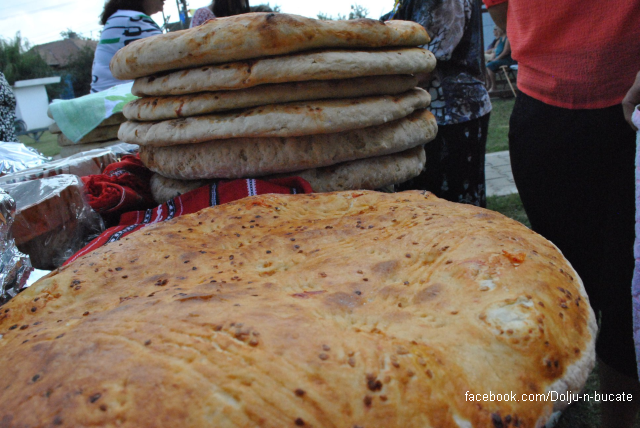Tourism Objectives in Dolj County
Situated in the historic region of Oltenia, Dolj County is a special tourist destination

Daniel Onea, 14.10.2021, 13:55
Situated in the historic region of Oltenia, Dolj County is a special tourist destination. The county seat, Craiova, is an ideal place if you have a passion for history, architecture, and the arts, as well as if you just want to sunbathe by the pool or take your kids to a playground. From Craiova, we will head to the rural part of the county, being able to discover ancient traditions and customs, as well as natural wonders. Mihai Neatu, vice-president of Dolj County Council, spoke to us about Craiova, one time a capital of aristocracy in southern Romania.
“It still bears the imprint of times when the impressing style of the citadel was shaped by renown Romanian and Western architects, as well as skilled builders, woodworkers, painters, and decorators. Our guests should definitely visit our historic center of the city, recently renovated. You cannot pass through Craiova without visiting the sumptuous Jean Mihail palace, which houses the Craiova Art Museum. You can tell that this used to belong to some of the wealthiest noble families, with the opulence of the architecture, the gilded wall decorations, Murano crystal chandeliers, Carrara marble stairways, and walls with Lyon silk tapestries. The noble families residing here were so wealthy that they lent money to the Romanian state during times of economic crisis. Right now it is perfectly restored, and the art museum here has a priceless collection, with over 9,000 items, and its point of pride are six original sculptures by illustrious sculptor Constantin Brancusi. Another place boasting rare pieces is the Oltenia Museum. I would recall two Roman spatha swords, the only ones of their type found on the former territory of the empire, perfectly preserved. You can also see there the sword used by famous highwayman Iancu Jianu, as well as a Byzantine gospel on vellum. This is one of only three copies extant in the entire world.
Also in the central area of Craiova, anchored in its centuries old history, is the oldest civilian building in the city, a Medieval monument, the Baniei House, as we were told by Mihai Neatu:
“The house was renovated by ruler Constantin Brancoveanu in 1699. Here, our guests can find exhibits reflecting traditional crafts, such as weaving, ceramics, fabrics, icons, liturgical objects, as well as valuable carpets and wall hangings, of which 120 were selected for the UNESCO heritage collection. They are considered paramount for the preservation of the tradition of carpet and wall hanging weaving in Romania and the Republic of Moldova.
Craiova is not just architecture, it is also natural beauty, according to Mihai Neatu:
“If the heart of Craiova is its historical center, its green lung is, without a doubt, the Nicolae Romanescu Park. It stretches over 100 ha, in the Romantic style. It is one of the places in the region of Oltenia that bears the mark of a major personality of their time. It is designed by French landscaper Edouard Redont, gold medalist at the Paris International Exhibition of 1900. It is a green paradise and an oasis of tranquility in the midst of urban bustle, along with the Alexandru Buia Botanical Garden, recently modernized. It is a very popular place with locals and tourists, it is a living work of art. I should also mention another major objective, in the courtyard of the Jean Mihail Palace, the Art Museum building. It takes visitors by surprise, as it is unique in the world. It is a 12 meter high glass prism, which showcases two larger than life reproductions of sculptures by Constantin Brancusi.
The rural part of Dolj County is also very rich in venues. Here is vice-president of Dolj County Council, Mihai Neatu:
“If we go out of Craiova, heading for the countryside, we have to keep in mind the culas all across Dolj County, which have also been restored. We have the so-called Jiu Corridor, with spectacular fauna and flora, as well as 100 km of Danube shore as the county south border. It is a county that offers bucolic hill scenery, with high forested hills with many bubbling springs. For instance, one main tourist attraction is the town called Cetate. Here you can find an old river customs building, also restored, with a great view of the Danube. It is there that I have seen the most beautiful sunsets on the river.
The county council has been investing in many of these attractions, all aimed at encouraging tourism. Here is Mihai Neatu:
“We started with the Art Museum, funded with European grants. We can also talk about the Contemporary Art Museum. It should be ready within a month. We also have the Dianu House Museum in Craiova. This is a historic monument, recently restored. We have an axis across the county, from northeast to southwest, as a tentative tourist and cultural circuit, starting with the vestiges of the Roman castrum in Racarii de Jos to the cultural port of Cetate, on the bank of the Danube. There is yet another circuit, covering the culas of Cernatestu and Brabova. They are recently renovated and look spectacular. We also tell our guests about a circuit in the south of the county, along the European cycling route called Eurovelo 6. It starts from Rast, and take tourists to the heart of the biggest protected area in the country as part of the Natura 2000 Network, the Jiu Corridor. It is a sanctuary for migratory birds, and is a part of the lower Danube green corridor. Also, we have the Zaval Forest nature reserve. We have many, many more tourist attractions.
Over the last decade, Craiova’s international airport has undergone a complex process of modernization and expansion, with flights to 32 European destinations. Dolj County, therefore, is an accessible destination that provides unforgettable experiences.






























